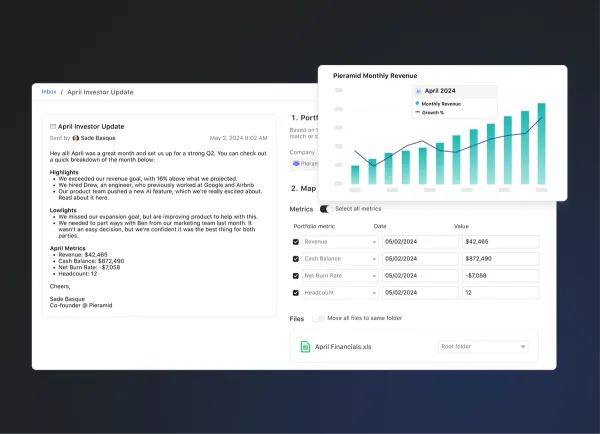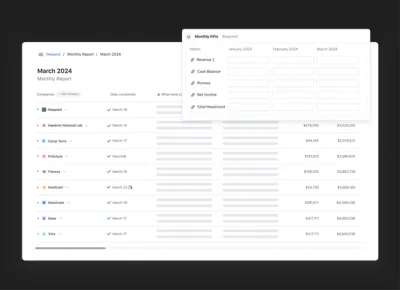
The Importance of Your Quick Ratio
Some investors refer to the quick ratio as a company’s acid test. Basically, the quick ratio indicates a company’s short-term liquidity and ability to pay current bills. The nickname and the quick ratio’s ability to demonstrate how well a company can operate in the near future should give you an idea of its importance.
You can easily calculate your quick ratio by adding up cash, short-term investments, immediate receivables, and cash equivalents. For the quick ratio, consider assets that you could transform into cash without losing value within 90 days. Then you divide this number by your current liabilities.
You can see this calculation’s formula below:
Cash + Short-Term Investments + Current Receivables + Cash Equivalents / Current Liabilities
For example, you might have $12,000 in cash and $8,000 in receivables. If you have $20,000 in debt, you would divide $20,000 by $20,000 to get a quick ratio of one.
What's a Good Quick Ratio?
If you have at least enough cash to meet your short-term obligations, that’s considered a positive sign for a new company. In other words, a good quick ratio would be at least one. A number over one might be even better, but any number less than one demonstrates that you could have to struggle to pay your immediate bills. On the other hand, too high of a value may mean that a company isn’t using their short-term assets to fund growth as well as they could.
SaaS Quick Ratio
Alternatively, there is a SaaS Quick Ratio. A SaaS Quick Ratio is similar to the standard quick ratio above but gives a SaaS company an overview of how efficiently their company can grow. The higher the SaaS quick ratio, the more efficiently a company can grow. In short, the formula divides any new MRR by any lost MRR. An example of a SaaS quick ratio can be found below:
SaaS Quick Ratio= (New MRR + Expansion MRR)/(Churned MRR + Contraction MRR)
While a higher new MRR growth rate can help fuel a good quick ratio, the best-in-class SaaS companies often have a lower churn rate which allow for a significantly higher quick ratio. With a lower churn rate, companies will have a much more reliable source for predicting future revenue and growth.
Your Quick Ratio in Visible
Tracking your quick ratio in Visible in incredibly easy thanks to our formula builder. To get started you’ll want to make sure you have all of your revenue metrics in Visible. We suggest creating a user provided metric or connecting Google Sheets, HubSpot, Salesforce, or ChartMogul to get started. From here, you’ll be able to create the quick ratio formula (as shown above) in the formula builder.
Once the quick ratio formula is created in Visible it will automatically update as your data sources refresh. We suggest sharing your quick ratio with management and executives so they have a quick view of how the company is performing and growing. Generally, we do not see founders share their quick ratio with their investors and rather share the underlying metrics.
Current Ratio
The current ratio refers to a number that indicates how well companies can pay bills that might crop up over the next year. To calculate the current ratio, you simply divide current assets by current liabilities like this:
Current Assets / Current Liabilities
If you company has $100,000 in current assets and $100,000 of debt, your current ratio would equal one.
What is a Good Current Ratio?
A good current ratio may need interpretation in light of averages for a specific industry or business. As with the quick ratio, a value of at least one indicates that a company has at least as many assets as liabilities. Some companies may consider using excess assets more productively as well. For instance, you can count inventory as an asset; however, you bring in revenue when you move inventory.
Quick Ratio Vs. Current Ratio
Quick ratio and current ratio sound similar but mean different things. To make sure you understand the difference, browse these comparisons of quick vs. current ratio:
- Quick ratio: This formula only uses short-term debt and liquid assets that you can turn into cash within 120 days.
- Current ratio: In contrast, the formula for the current ratio uses all assets and liabilities.
To understand the difference between the quick and current ratio, consider a simple example of a company with $100,000 in current liabilities:
- Cash and cash equivalents: $10,000
- Short-term marketable securities: $20,000
- Accounts receivable: $50,000
- Inventory: $112,000
- Prepaid expense: $8,000
You get a current ratio of 2 by dividing total assets of $200,000 by liabilities of $100,000. In contrast, you would have a quick ratio of .8 when you divide $80,000 by $100,000. This difference between the numbers could mean that you should consider freeing up a bit more liquidity for short-term obligations. Again, you have to interpret the metrics in light of the unique situation.
That’s why you might include prepaid expenses in your current ratio. You can weigh prepaid expenses against your current liabilities; however, you might not include them in the quick ratio. For instance, you may have to purchase plane tickets for travel. In one sense, those could count as an asset, but they may not be easy to convert back into cash to satisfy an obligation.
Liquidity Ratios
Sometimes people use liquidity ratio to mean the same thing as the quick ratio. They may also refer to the quick ratio as the quick liquidity ratio. In a broader sense, liquidity ratios refer to various metrics that help investors and owners understand how well companies can meet their current debt obligations.
Related Resource: From IPOs to M&A: Navigating the Different Types of Liquidity Events
Besides the quick and current ratio, liquidity ratios could also include the operating cash flow ratio. You simply calculate this number by dividing liabilities by cash flow, but you don’t take other assets that you can quickly convert into cash into account. That means that this number will probably be a little lower than your quick ratio calculation. This number tells you how well a company can meet their obligations with the cash they have on hand and without having to collect receipts or liquidate cash equivalents or short-term investments.
Why are Liquidity Ratios Important?
Quick, current, and all liquidity ratios are important. Obviously, companies need to pay their typical operating expenses. They may also need funds for unexpected expenses and to take advantage of growth opportunities. All of these metrics give investors a quick way to judge the solvency of a company. That’s why they’re the kind of numbers that investors want to see. In addition, they are helpful guides for company owners and managers.
Related resource: Dry Powder: What is it, Types of Dry Powder, Impact it has in Trading




